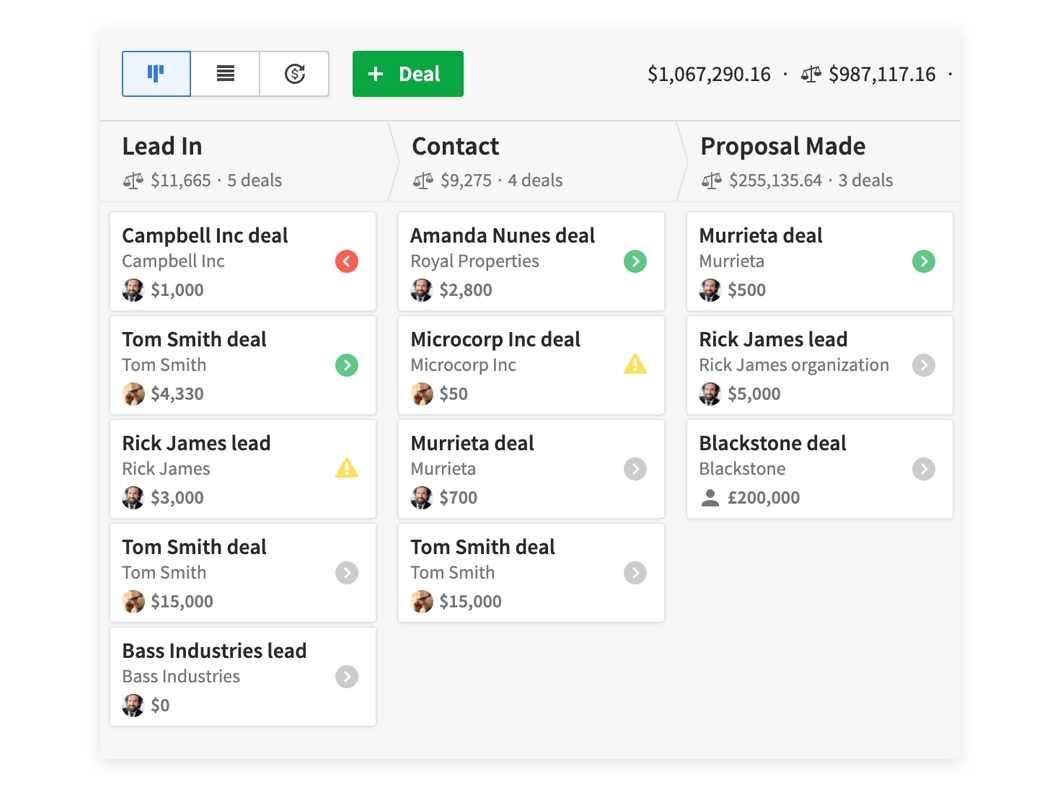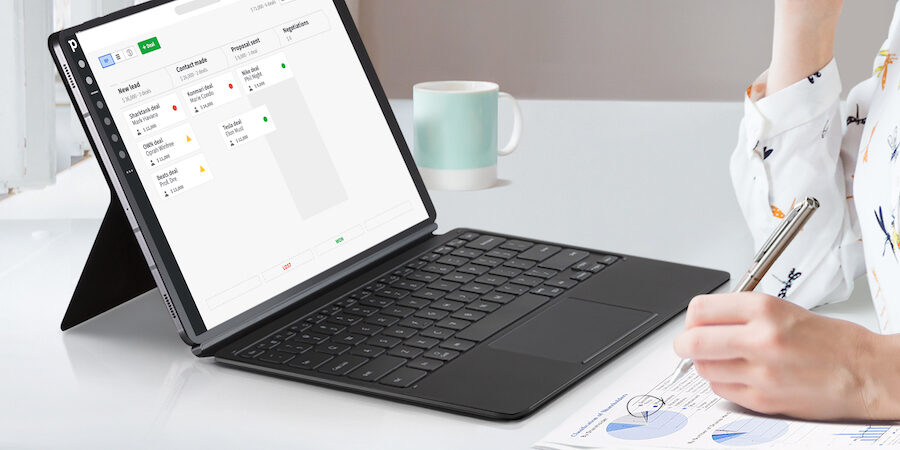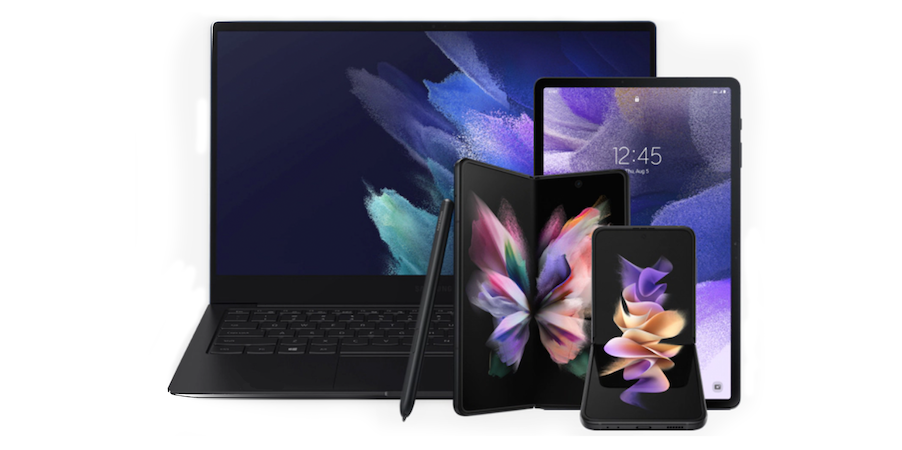The year 2020 was a tough one for sales teams. Not only did it turn their pipelines into question marks, it also cancelled the in-person meetings that help them build relationships, close deals and get referrals.
Krish Panicker, vice president of product for Pipedrive CRM, says the pandemic forced salespeople to adapt their communication strategies and embrace digital business technology in a big way — not only to maintain important relationships but also to find new ones.
“Our co-founders were very successful salespeople and entrepreneurs who built Pipedrive around the idea that in sales, you can’t directly control your results, but you can control your actions,” says Panicker. “You just do the math: How many deals do you need to hit your target, and how many actions do you need to take to get those deals? Even during COVID, the formula wasn’t changed. If you know the four key elements to new sales — number of deals, deal velocity, deal conversion, deal value — you know which levers to start moving.”
Pipedrive helps your sales team identify those levers by letting them visualize the data and the sales pipeline. Thanks to recent integrations and automations, it also helps fill their pipelines with fresh leads, keeps data up to date with automatic documentation and puts the focus on the actions that lead to sales.
How Pipedrive came to be
Pipedrive understands the challenges that small to midsize businesses (SMBs) and their sales teams are facing. Pipedrive is also an SMB with its own sales team, and the company was built by salespeople.
“Two of our five co-founders were hardcore salespeople who did sales management and sales coaching,” Panicker explains, “and about 10 years ago, they were frustrated with existing sales technology. Small businesses were still using spreadsheets, while enterprises were using CRM [customer relationship management] solutions that basically amounted to dead databases. Our original CEO had spent loads of money on what was supposed to be the best CRM, and it just didn’t lend itself to the needs of salespeople.”
So they created what they couldn’t find on the market: a CRM solution focused on sales that allows teams to actively visualize data and follows their unique workflow.
“We were the first to introduce this pipeline view, and it really took off,” Panicker says. “Our founders weren’t interested in delivering loads of features. They were interested in moving things out of the way so salespeople could keep selling and increase the deal velocity.”
How Pipedrive streamlines sales workflows
Pipedrive has added plenty of features and advanced functionality, but the user experience is still streamlined, and the solution can be as simple or sophisticated as your sales team wants it to be.
To use Pipedrive right out of the box, you can simply sign up for an account and start adding deals — either from your current pipeline or from Pipedrive’s database of over 400 million leads. The data fields are prepopulated based on the most commonly collected sales data, and the pipeline view reflects conventional sales stages.
Alternatively, you can tailor the solution to your sales team’s needs by adding custom data fields and predefined stages. You can even automate some actions and documentation — and integrate your favorite collaboration and productivity apps.
Integrations and automation
During the first year of using Pipedrive, 78 percent of new users find that they close deals faster, and 73 percent win deals faster. That’s because Pipedrive allows salespeople to visualize data and map it onto their sales process. With some integrations and a little customization, Pipedrive can even automate parts of the sales workflow — from call logging to initiating communications.
“You can create ‘if this, then that’-type workflows,” Panicker explains. “If you have something that happens at a particular stage in the pipeline — maybe you send a certain email or the client needs a certain document — you can automate that. We have web forms you can put on your website to gather prospect data, and when people complete them, you can trigger a notification to the appropriate salesperson depending on the prospect’s location.”
Some of this functionality is built into the Pipedrive solution, while some of it is enabled by integrations. Pipedrive’s app marketplace currently includes more than 230 third-party apps for marketing, communications, sales enablement, file sharing, e-signature solutions and more.

“We’ve grown our app marketplace a lot over the years,” Panicker says. “We’ve added Zoom integrations and Microsoft Teams and integrated those in ways that streamline workflows — for example, making it possible to automatically record and log Zoom calls. We also have a comprehensive set of APIs, so you can integrate apps that aren’t in our marketplace.”
In addition to helping sales teams connect with customers during COVID-19, Pipedrive also recognizes salespeople’s need to connect with each other — to be part of a community of sales professionals who discuss their struggles and their best practices.
“The community helps people with their struggles and helps them rethink how they work and operate,” explains Panicker. “Salespeople tend to be a social group, and this lets them connect with likeminded people when they can’t connect in person.”
Getting started with Pipedrive CRM
Getting started is as simple as creating an account and adding deals. You can also pursue Pipedrive’s Academy to learn customer relationship management tips and sales skills. “We have a great self-service solution,” says Panicker, “but we also have a customer support team that’s just focused on onboarding. And if you’re a large enterprise that has very bespoke requirements, we have a professional services team at hand to help with those needs.”
Power your business with Samsung.com Advantage
Get exclusive discounts, financing and other deals on Samsung business solutions. Download Now
Looking forward, Pipedrive is spending more time considering the needs of the people who support sales and help drive revenue.
“Instead of just a sales cycle, many companies now have this whole revenue cycle,” explains Panicker, “which is lead generation (either by marketing or SDRs), having account executives help close deals faster, having account managers to renew accounts and maybe marketing to help nurture relationships. So, we’re stepping back and looking at the full picture, too, and we’ve been moving toward being more of a revenue platform that helps customers hit their revenue targets. At the same time, we’re helping them adapt to new ways of working — during the pandemic and beyond.”
Discover more essential apps to empower your growing business — and explore exclusive business pricing, financing and trade-in options and other deals on everything from phones and tablets to monitors and memory.









